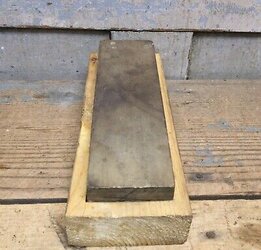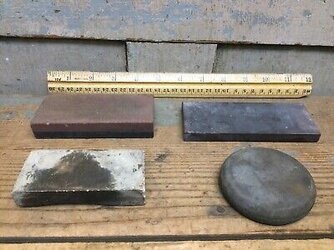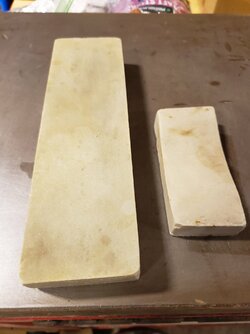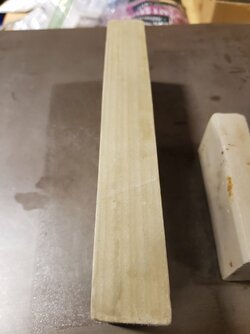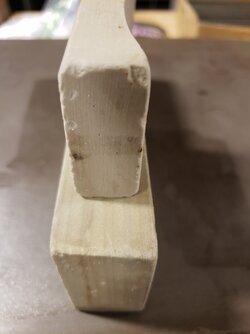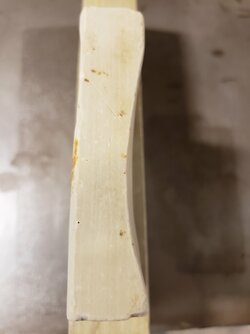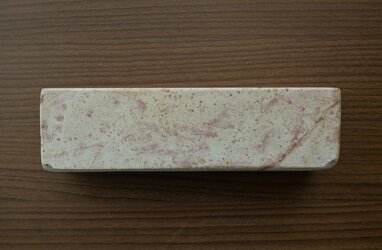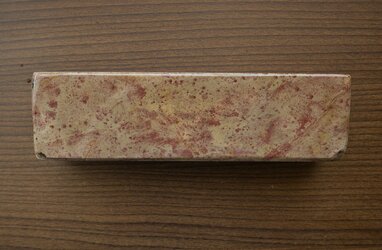I think I've figured out why some stones are found to have been used on the layered side.

I went to use this hindo yesterday for the FIRST time since lapping it. Lo and behold, there's a chip in the surface. I know that was not there when I finished lapping.
Griswold describes hindo as being quarried like a slate:

I went to use this hindo yesterday for the FIRST time since lapping it. Lo and behold, there's a chip in the surface. I know that was not there when I finished lapping.
Griswold describes hindo as being quarried like a slate:


